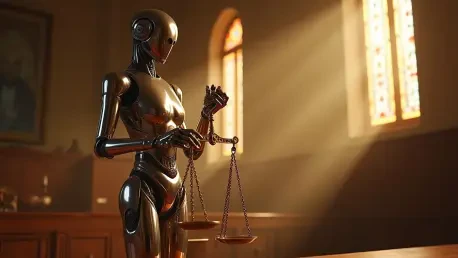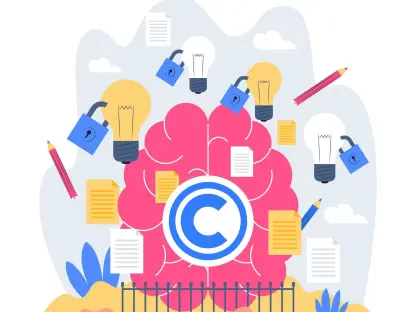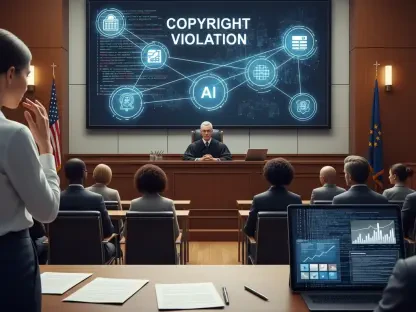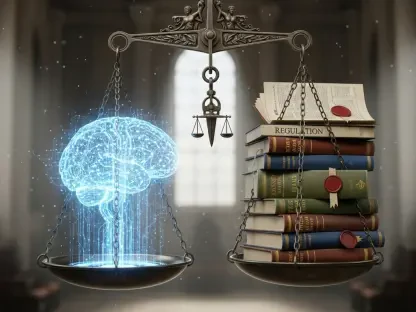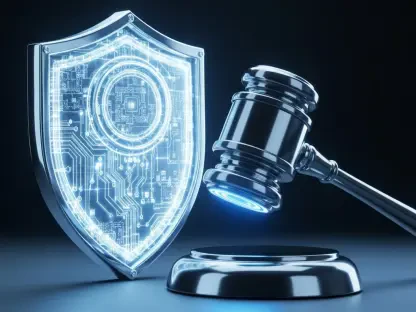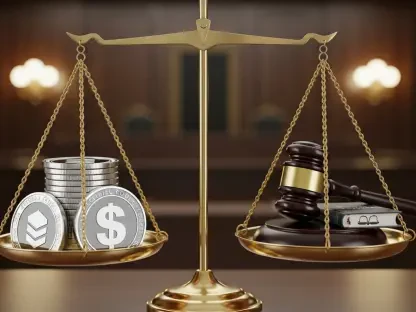Artificial intelligence has rapidly become an integral part of technological advancement, with its ability to process vast amounts of data leading to significant innovation across multiple sectors. Yet, as AI systems have evolved, they have also encountered complex legal quandaries, especially concerning the fair use of copyrighted content. With a myriad of potential legal implications, the crossroads between AI technology and copyright law has become a hotbed for legal discourse. Understanding these challenges is paramount, as their resolution will inevitably shape the development and commercialization of AI solutions across industries.
The Intersection of AI Technology and Copyright Law
AI systems thrive in environments rich with data, often relying on copyrighted material for developing complex algorithms and enhancing machine learning models. Given this dependence, the role of copyright law becomes increasingly critical, posing both a challenge and an opportunity for AI creators and users. In many instances, the unlicensed use of copyrighted material during the training phase can lead to significant legal risks unless justified by fair use provisions. This situation creates a delicate balance between leveraging valuable content and respecting intellectual property rights.
The core of this challenge lies in how AI technologies process copyrighted content. Unlike traditional users who might consume or distribute a copyrighted work, AI models use it to learn, adapt, and eventually produce outputs. This unique function of AI necessitates a reexamination of traditional copyright frameworks, particularly the doctrine of fair use, which may offer a legal shield, allowing AI developers to innovate without infringement.
Essential Elements of AI Development
Data Collection and Usage
A fundamental component of AI development is the gathering and utilization of extensive datasets, comprising a mixture of proprietary and open-access data. Often, these datasets contain copyrighted materials essential for training AI models to perform complex tasks. The reliance on copyrighted content raises questions about whether AI development processes infringe on copyright laws or fall within fair use parameters—an unsettled legal territory with major implications for innovation.
AI models’ development hinges on the accessibility of rich datasets; however, utilizing such content without infringing copyrights poses a significant challenge. Developers must strike a balance between ingesting relevant data and navigating legal confines. The quality and relevance of input data play a substantial role in shaping AI output, further complicating the assessment of what constitutes fair use in this context.
Training AI Models
AI models require extensive training using vast amounts of data, an aspect that is often deeply entwined with copyrighted content. During this training phase, AI systems perform countless iterations, modifying and refining their processes to achieve the desired level of performance. The consideration of fair use during training is crucial, especially since models need to access specific inputs to improve their predictive accuracy.
Copyrighted material’s role in enhancing AI models emphasizes the need for clear legal interpretations of fair use. These models achieve optimal functionality by adapting their algorithms through exposure to diverse data sources, which frequently includes copyrighted content, intensifying the conflict between technological development and copyright law.
Emerging Legal Trends and Innovations
The evolving legal landscape surrounding AI and fair use is marked by a growing number of legal cases and decisions that could set pivotal precedents. The interpretations of fair use in the context of AI have diverged, with opinions varying on how to equitably integrate these advancements while safeguarding intellectual property. New cases reflect the broader debate over where to draw the line between promoting technological innovation and protecting creators’ rights.
Legal adaptations appear on the horizon as jurisdictions grapple with AI’s increasing influence on copyright law. Court rulings in these cases may redefine fair use’s scope, influencing how future AI developments proceed without legal hindrances. Emerging trends indicate a push toward a more adaptable legal framework that acknowledges AI’s unique role in data processing and content creation.
Real-World Applications and Implications
AI’s reliance on copyrighted material has considerable implications across various sectors, from entertainment to healthcare. For instance, AI’s application in creating music, visual art, or content curation services often entails analyzing large volumes of copyrighted work to achieve a creative or functional end. As AI systems become increasingly sophisticated, their ability to mimic human-like outputs raises questions regarding ownership and infringement.
In industries like healthcare, AI offers profound benefits through data analysis and pattern recognition, though it raises significant fair use concerns. The distinction between data usage for innovation and infringement remains blurred, highlighting the pressing need to reconcile AI’s potential with existing intellectual property laws. This legal ambiguity has sparked discussions aiming to establish clear guidelines for AI’s role in content-rich environments.
Challenges within the Fair Use Doctrine
Applying the fair use doctrine to AI technologies involves complex considerations, given the regulatory ambiguities and legal hurdles involved. The fair use defense may serve as a legal haven, ensuring AI development can proceed without infringing copyrights, yet its scope remains contentious. Efforts to clarify these legal boundaries reflect an ongoing struggle between fostering innovation and upholding copyright protections.
Legal and regulatory discussions continue to explore ways to better integrate fair use into the framework governing AI. As stakeholders navigate these complexities, there evolves a greater understanding of AI’s unique needs and the nuanced application of legal tenets to ensure protection for both creators and developers. Continued dialogue among legal experts, policymakers, and technologists is essential to crafting fair and transparent standards.
Prospects for AI and Copyright Laws
Looking ahead, potential advancements in copyright legislation may better align with AI’s innovative trajectory. Adaptations to existing laws could grant AI greater leeway in utilizing copyrighted works, assuming that new interpretations of fair use are embraced. Conversely, technological breakthroughs within AI could lead to decreases in dependence on copyrighted inputs as systems become more autonomous and efficient.
The anticipation of refined copyright norms suggests an era where AI’s potential is maximized without treading on creators’ rights. Future developments might include automated systems recognizing and managing copyright issues—or new consensual data-sharing platforms that enhance collaboration between AI technologies and content creators—potentially streamlining fair use considerations.
Summary of Key Findings
The interplay between AI technology and copyright law unveiled significant challenges and opportunities shaping the technology sector. Understanding the fair use doctrine’s current and evolving role has proven beneficial in navigating these legal waters. Courts’ decisions surrounding these legal quandaries had far-reaching consequences, influencing both the pace of AI advancement and the legal protections of copyrighted materials. As the legal and technological landscapes evolved, they necessitated novel solutions and standards to cater to AI’s intensive data needs while respecting intellectual property rights. These insights underscored the importance of ongoing dialogue and collaboration in realizing the potential of AI within a fair and lawful framework.
